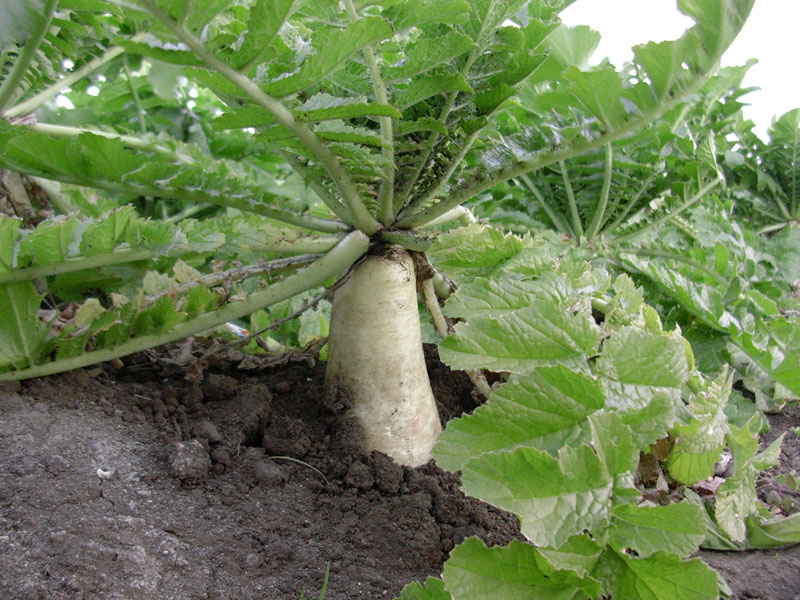With the unseasonably hot (and windy) weather we have been experiencing, I was able to till a few of the garden beds by hand this week. I planted some late summer/fall cover crops on these beds and want to turn this growth into the soil for added organic matter. Hand tilling usually starts with this "beast" the broadfork:
The curved tines allow an easy rocking motion to aerate and loosen compacted soil. It's great for spaces that will be grown intensively, as it does not disturb the soil layers and structures, and allows earthworms and microbes to do their job in the soil. Although heavy, the tiling motion is effortless.
Hand tilling can be fun, and quite a workout, but I am always interested in learning ways to "no-till" my garden beds. You can find a number of experiments for no-till but one of the most interesting approaches is using the daikon radish or more appropriately dubbed the "tillage" radish . I first experimented with these radishes on a project with Charlie White, a student of Dr. Ray Weil, at the University of Maryland. Dr. Weil has been working with a team of researchers and farmers to study the benefits of the tillage radish since 2001. The objective of their project was to study weed suppression during and after tillage radish cover crops were grown. However, the results of their study proved more beneficial.
Here's how it works: tillage radishes, planted in the fall as a cover crop, have been shown to benefit soil fertility, reduce soil compaction, and limit weed growth. The radishes grow a very long taproot, up to 2" diameter and 18" long! This long root drills holes in the soil and opens up spaces for plant roots, oxygen, and earthworms to move freely. The radish, then fully mature by winter, dies off from the frost leaving its leafy green matter as a residue on the soil surface. This mulch not only add nutrients to the soil, but also protects the soil surface from erosion during the winter and suppresses early Spring weeds. Studies show the radish cover crop can capture 150-200lbs of nitrogen per acre, and make it available in Spring for the first planting of early crops.
Another benefit I have found of the radish cover crop is the soft soil it leaves behind in the Spring. Raking back the decomposed leaf matter, I found soil that was loose, aerated, and ready to be seeded or transplanted right into. No need to till by hand or large, soil compacting tractors. I love the idea of preparing the fine seedbeds with plants instead of steel. Plus, a few "stolen" radishes make a delicious fall snack!



Wow. I had no idea how important a diakon planting could be! for a small space is this method recommended?
ReplyDeleteAbsolutely. You can seed the daikon in your garden in rows 6" apart. You can always thin out some radishes on the smaller side to eat. The canopy will shade out other weeds and the mulch in the Spring will keep soil moist and prevent early weeds.
ReplyDeleteThank you for the info. I have a question. What happens to the large root mass during the winter. I would expect there to be tough roots remaining in the ground the following spring?
ReplyDelete